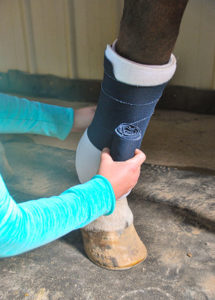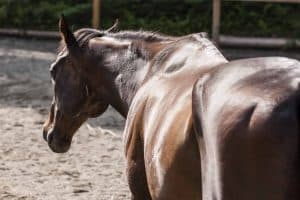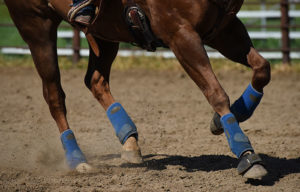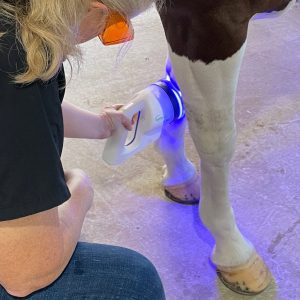Restraint Techniques for Breeding
When a mare and a stallion meet, love might be in the air…but there’s the potential for danger, too. Particularly when humans get in the middle of it all. In our efforts to orchestrate the best possible combinations of
When a mare and a stallion meet, love might be in the air…but there’s the potential for danger, too. Particularly when humans get in the middle of it all. In our efforts to orchestrate the best possible combinations of conformation, temperament, and talent, we long ago became involved in the process of equine matchmaking–and in doing so, we put ourselves on the front lines of the stormy process of breeding. As a result, every breeding manager must make safety a first priority for all the parties involved–the handlers’, the stallion, and the mare.
Stallions can be formidable, especially when in the presence of an ovulating mare; their aggressive behavior is a risk factor in itself. And while a mare in season is generally in a receptive mood, that doesn’t mean she is not capable of aiming a good kick in her suitor’s direction–or her handlers’. If you are breeding by live cover, it’s important to understand the risks, and to take appropriate action to make breeding as safe a process as possible. The use of a few judicious restraint techniques can go a long way toward ensuring that safety.
TheHorse.com is home to thousands of free articles about horse health care. In order to access some of our exclusive free content, you must be signed into TheHorse.com. Already have an account? Written by: Stay on top of the most recent Horse Health news with © 2022 Copyright Statement dolor sit amet, consetetur sadipscing User Terms, sed diam nonumy eirmod tempor invidunt ut labore et dolore magna aliquyam erat, sed diam voluptua. At vero eos et accusam et justo duo dolores et ea rebum. Stet clita kasd gubergren, no sea takimata sanctus est Lorem ipsum dolor sit amet. You need to be logged in to fill out this form "*" indicates required fields |













